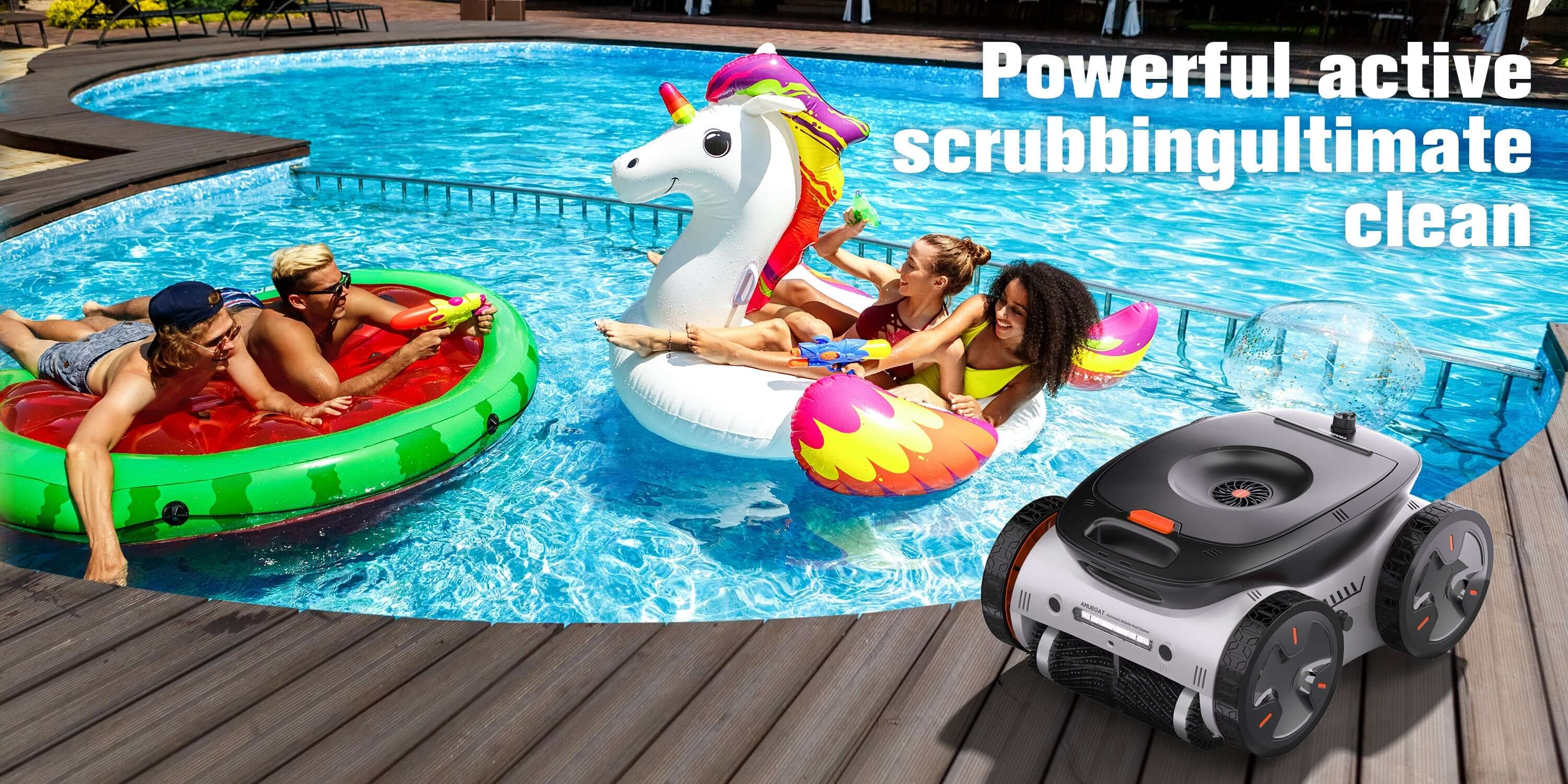In a world where we can barely find time to eat a proper meal, who wants to spend precious weekend hours pushing a vacuum or scrubbing windows? Enter robotic cleaners—those little mechanical minions promising to take tedious cleaning tasks off your plate. But with prices ranging from "reasonable splurge" to "second mortgage territory," how do you know which ones are worth your hard-earned cash? Let's cut through the marketing hype and get down to what really matters.
Understanding the Robotic Cleaning Revolution
Remember when robotic vacuums first hit the market? They were basically expensive bumper cars that occasionally picked up dust. Fast forward to today, and these smart devices map your home with military-grade precision, respond to voice commands, and send you updates while you're at the office. The technology has exploded beyond floor care to include window cleaners, pool maintenance robots, gutter cleaning bots, and even toilet-scrubbing devices (yes, really).
The global robotic cleaner market hit $10.3 billion in 2023 and is projected to reach $27.2 billion by 2030. This isn't just a fad—it's a fundamental shift in how we approach household maintenance. And with the average American spending 23 hours per month on household cleaning, these robots offer something invaluable: time.
Breaking Down Robot Types: What's Worth Your Money?
Robotic Vacuum Cleaners: The Gateway Robot
The most established category in the robotic cleaning world, these devices have evolved dramatically over the past decade. When evaluating options, focus on:
Suction Power: Measured in Pascals (Pa), this indicates cleaning strength. Budget models typically offer 1,500-2,000 Pa, while premium options can exceed 5,000 Pa. If you have pets or carpeting, don't go below 2,500 Pa unless you enjoy seeing tumbleweeds of fur drift across your floor.
Navigation Technology: This is where budget and premium models truly diverge. Basic robots use random patterns and bump-and-go navigation, while advanced models employ LIDAR, VSLAM (Visual Simultaneous Localization and Mapping), or other sophisticated systems to create detailed home maps. The difference isn't just efficiency—it's the difference between a robot that gets stuck under your couch daily versus one that remembers every furniture leg in your home.
Battery Life: Look for at least 90 minutes of runtime for homes larger than 1,000 square feet. More important than raw runtime is intelligent recharging—better robots will resume cleaning where they left off after recharging, rather than starting the whole process over.
Smart Features: Wi-Fi connectivity, app control, and voice assistant integration have become standard, but don't be swayed by gimmicks. The ability to set no-go zones, schedule cleanings, and receive maintenance alerts are genuinely useful; a robot that plays music while cleaning is less so.
Maintenance Requirements: Check the cost and availability of replacement parts like filters, brushes, and batteries. Some manufacturers make these surprisingly difficult to find or unnecessarily expensive.
Robotic Pool Cleaners: Summer's Best Friend
For pool owners, manual cleaning is a constant battle against nature's determination to fill your pool with leaves, bugs, and mysterious gunk. Robotic pool cleaners like the Hydro-Puls model offer salvation, but consider these factors:
Cleaning Coverage: Superior models clean the floor, walls, and waterline. Budget models might only handle the floor. If your pool has stairs or complex shapes, verify the robot can navigate these features.
Filtration Capacity: Look for fine filtration capabilities (down to 2 microns) that can capture not just leaves but fine debris and even some bacteria. Larger debris canisters mean less frequent emptying.
Cycle Time: Efficient models should complete a standard pool cleaning in under 2 hours. Energy consumption matters too—the most efficient models operate for about 5 cents per hour.
Programmed Patterns: Advanced pool robots use algorithms to ensure complete coverage rather than random movements, significantly improving efficiency.
Cord Management: Tangled cords are the nemesis of pool robots. Look for models with swivel technology that prevents cord entanglement.
Robotic Window Cleaners: For the Brave New World
Window cleaning robots like the SmartPro UltraClean are relatively new to the market but gaining popularity, especially for homes with large or difficult-to-access windows. Key considerations include:
Safety Systems: Reliable backup power and strong suction or magnetic systems are non-negotiable for devices that operate on vertical surfaces. The last thing you want is gravity winning the battle with your expensive new gadget.
Edge Detection: Superior models can detect window frames and navigate around them without human intervention.
Cleaning Pattern: Systematic paths yield better results than random movements. Some models can calculate the most efficient cleaning route.
Water Management: Self-contained units that spray, scrub, and squeegee without dripping are worth the premium price.
Weight and Size: Lighter models are easier to place on windows but may have less cleaning power. Consider window accessibility when choosing—reaching up to place a heavy robot on a second-story window defeats the purpose.
Real Talk: When Robots Make Sense (And When They Don't)
Let's be honest about when these mechanical helpers earn their keep:
Worth Every Penny When:
Your Time Is Genuinely Limited: If work, family, or other commitments leave you with minimal free time, the hours saved on routine cleaning can justify the investment.
You Have Specific Physical Limitations: For those with mobility issues, back problems, or other physical challenges, robotic cleaners provide independence and maintain living standards.
You Have Large Cleaning Areas: A robotic vacuum makes more sense for a 3,000 sq ft house than a studio apartment. Similarly, pool robots deliver greater ROI for larger pools.
You Have Regular, Predictable Messes: Households with shedding pets, active children, or high-traffic areas benefit from scheduled daily cleaning that prevents buildup.
Skip It When:
Your Living Space Has Complex Obstacles: If your home resembles an obstacle course with level changes, delicate items, or numerous tight spaces, you'll spend more time "robot-proofing" than you save.
You're Looking for Deep Cleaning: Robots handle maintenance cleaning well but aren't replacements for occasional deep cleaning services.
Budget Is Your Primary Concern: Quality robotic cleaners represent a significant investment. If you're stretching your budget to afford one, the stress might outweigh the convenience.
The Hidden Costs of Robotic Freedom
Before committing to a robotic cleaner, consider these often-overlooked factors:
Preparation Requirements: Robotic vacuums can't move shoes, pick up children's toys, or untangle cords. The "pre-cleaning" required for efficient robot operation can eat into your time savings.
Maintenance Time: Filter cleaning, brush untangling, and general maintenance require regular attention. Some robots are significantly easier to maintain than others.
Replacement Parts: Over a 3-5 year lifespan, you'll likely replace batteries, filters, brushes, and other components. These costs can add 30-50% to your initial investment.
Learning Curve: Setting up no-go zones, creating cleaning schedules, and troubleshooting issues requires initial time investment and technical comfort.
Making the Smart Choice: Final Recommendations
For most households, start with a quality robotic vacuum—it offers the most noticeable impact on daily cleaning requirements. The sweet spot for value currently sits in the $300-$600 range, where you get reliable navigation and strong cleaning performance without paying for premium brand names or cutting-edge features you might not use.
For pool owners, robotic pool cleaners like the Hydro-Puls deliver tremendous value considering the time and physical effort they save. They're particularly worthwhile for those who use their pools regularly or have limited mobility.
Window cleaning robots like the SmartPro UltraClean make sense primarily for homes with many large windows or difficult-to-reach glass. For standard residential windows, traditional methods may still be more efficient unless safety concerns make ladder use problematic.
Remember that robots excel at maintenance cleaning, not deep cleaning. The ideal approach combines regular robotic cleaning with occasional manual or professional deep cleaning for optimal results.
The bottom line? The best robotic cleaner isn't necessarily the most expensive one—it's the one that addresses your specific cleaning challenges while fitting seamlessly into your lifestyle. Choose wisely, and you might find yourself with that rarest of modern luxuries: free time you didn't have before.
Have you made the leap to robotic cleaning? Share your experiences in the comments below—both the triumphs and the robot fails. We'd love to hear which models have earned their keep in your home!




Leave a comment
This site is protected by hCaptcha and the hCaptcha Privacy Policy and Terms of Service apply.